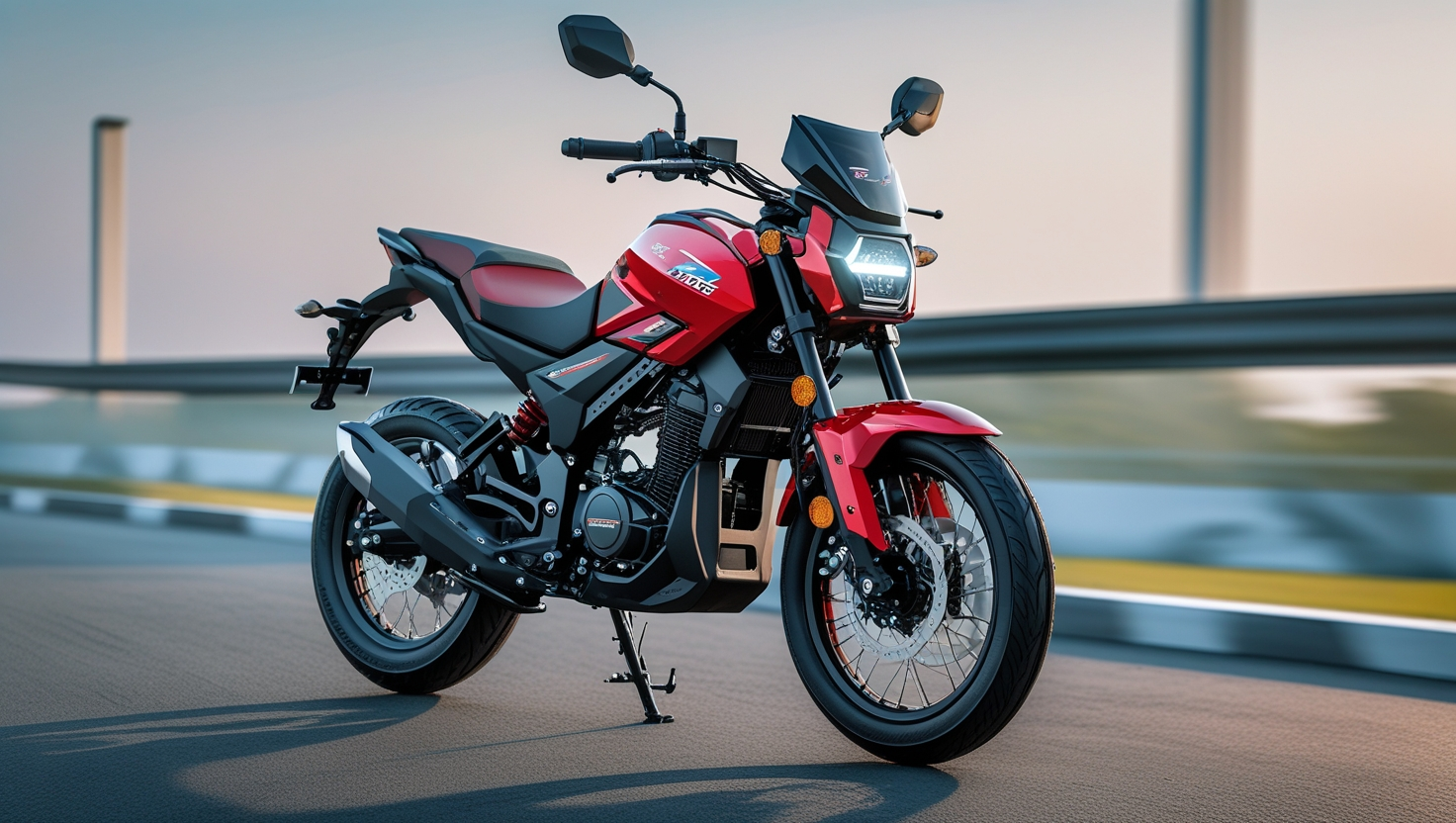TVS Raider 125 — Complete 2025 Review: Specs, Ride Modes, Mileage & Should-You-Buy Guide
The TVS Raider 125 changed the game for sporty commuters in India. Affordable, punchy and loaded with smart tech like a connected TFT cluster and selectable ride modes, the Raider blends city-friendly fuel efficiency with an eager 125cc character. This long-form guide walks you through everything a buyer needs to know in 2025: official specs, real-world mileage, the different variants, how fast it actually feels on the road, and which rivals to compare it with. You’ll also get practical test-ride tips, ownership costs to expect, and a simple buying checklist so you choose the right Raider (or competitor) for your needs. I checked official TVS specs, road tests and owner reports to separate manufacturer claims from what riders actually experience — so you can decide with confidence.
Why the TVS Raider 125 still matters in 2025
TVS launched the Raider as a sporty, mileage-friendly 125cc commuter with tech normally reserved for higher segments. Since its updates, the Raider’s headline features — a 5-inch SmartXonnect TFT, ride modes (Eco/Power/Boost), and sharp acceleration — make it a strong contender for young commuters who want both substance and style. TVS positions it as a “wicked ride” that aims to deliver fun without sacrificing fuel economy.
Quick facts (at a glance)
Engine: 124.8 cc, 3-valve, air + oil cooled.
Power / Torque: ~11.2–11.38 PS and ~11.2–11.75 Nm depending on iGO assist spec.
0–60 km/h: Best-in-class claim ~5.8 seconds (iGO Assist).
Top speed (claimed): ~99–100 km/h in stock trim.
Claimed ARAI mileage: sources report between 56.7 kmpl and 67+ kmpl depending on variant and reporting; real-world owners commonly report mid-50s to mid-60s kmpl. (see mileage section).
Fuel tank: 10 litres. Kerb weight: ~123 kg.
Key tech: 5-inch TFT SmartXonnect (Bluetooth, navigation, voice assist), ride modes, ISG silent start, Sync Braking Technology (SBT), 240mm rotopetal disc on disc variants.
Price (range): Ex-showroom roughly ₹87k–₹1.03L (varies by state & variant).
Design & ergonomics — sporty without overreaching
The Raider wears a street-fighter silhouette: muscular fuel tank, sharp LED headlamp, and a compact tail. TVS tuned the ergonomics for city commuting — slightly forward stance, comfortable for an urban mix of traffic-sorting and short highway runs. The split-seat options add a sporty vibe, while the single-seat variants appeal to delivery or solo-rider buyers. Overall, the Raider balances aggressive styling with practical rider comfort.
Engine, ride modes & real-world performance
The Raider’s 124.8 cc 3-valve engine is tuned for a broad torque band rather than an all-out top speed. TVS highlighted the 0–60 km/h figure (~5.8 sec for iGO-assisted models) as best-in-class — in everyday riding this translates to brisk overtakes and confident traffic merges.
Ride modes are a genuine differentiator in this segment:
Eco: maximises mileage for city commuters.
Power: more responsive throttle and slightly higher midband.
Boost: short bursts of higher acceleration for quick overtakes.
Independent road tests report 0–60 and 0–100 figures in line with TVS’s claims and confirm the Raider feels punchy for its class — especially in Power or Boost modes. Expect lively acceleration up to ~90–100 km/h; beyond that the bike’s gearing and engine make high sustained speeds less comfortable.
Tech & features — what you actually get
TVS packed the Raider with segment-first and premium touches:
5-inch SmartXonnect TFT (connected): turn-by-turn navigation, calls/SMS alerts, voice assist, ride reports and an exclusive app. This is a strong draw for riders who want smartphone-style connectivity on a budget bike.
Ride modes & ISG (Idle Stop-Go): improves fuel economy in city traffic.
Sync Braking Technology (SBT): combined braking feel on disc variants plus a large 240mm roto-petal disc up front for confident stopping.
LED lighting and USB charger: modern conveniences that riders expect.
These features move the Raider from ordinary commuter to a tech-forward 125cc machine that’s usable in daily life — not just a weekend toy.
Variants, colours and choosing the right trim
TVS offers multiple trims: Drum, Single Seat, Split Seat, SX, iGO / SmartXonnect versions and limited editions (Super Squad / themed liveries). The SmartXonnect/TFT variants cost more but give the full connected experience; the base drum variant keeps the price accessible while retaining the same engine. Check your local TVS dealer for the latest colour packs and limited editions — TVS refreshes palettes regularly.
Mileage: claims vs reality
Mileage is a hot topic. Different sources list varied ARAI-claimed numbers — some show 56.7 kmpl, others report 65–72 kmpl depending on the variant and interpretation of test reports. Independent road tests and owner forums suggest real-world averages of roughly 55–65 kmpl, with careful Eco-mode riding and steady speeds delivering the higher end. City stop-start and aggressive riding bring figures down toward the mid-50s. If fuel economy is your top priority, expect excellent numbers for a 125cc — but treat manufacturer claims as optimistic.
Pricing & value: how much will it cost you?
Across India the Raider’s ex-showroom band is usually in the ₹87,000–₹1.03 lakh range depending on state and variant (disc vs drum, SmartXonnect vs base). On-road prices will vary with RTO, insurance and accessories. Compared to premium 125cc rivals, the Raider often undercuts top trims while offering more tech — which translates to strong value for buyers who want features without paying outright premium prices. Always compare on-road quotes from local dealers before deciding.
Maintenance & running costs (practical expectations)
Service intervals: Follow TVS recommended schedule — typical for 125cc bikes (first service within 500–1000 km, then periodic 3–6k km intervals). Routine costs are similar to other mainstream 125s.
Spare parts & warranty: TVS’s wide dealer network makes parts and service relatively accessible compared to smaller brands. Check what the dealer includes in the showroom-priced warranty and whether extended plans are available.
Insurance & fuel costs: Expect typical two-wheeler insurance bands; fuel costs depend on your mileage. Given real-world 50–65 kmpl, running cost per km is competitive.
Rider experience — what owners say
Owner threads and reviews praise the Raider for:
Quick throttle response and punchy acceleration for city overtakes.
A connected cluster that’s genuinely useful for navigation and ride metrics.
Good fuel efficiency when ridden conservatively.
Common rider caveats:
Ride comfort on long highways can be limited by 125cc gearing and seat cushioning.
Some variants (single-seat) are aimed at delivery or solo riders — think about passenger use before choosing.
Real mileage varies heavily with riding style.
Competitors — who to compare it with
If you’re shopping, compare the Raider with:
Hero Xtreme 125R — sporty styling and strong value.
Bajaj Pulsar 125 — performance-oriented, proven platform.
Honda CB125 Hornet (newer entries) — refined engines and brand reliability.
The Raider’s edge is tech (TFT/connected features) + ride modes; competitors may offer marginally different ergonomics, dealer footprints or perceived reliability. Test-ride all shortlisted bikes before you decide.
Who should buy the Raider 125?
Buy the Raider if:
You want a tech-rich commuter with ride modes and a connected display.
You value punchy low-mid acceleration for city overtakes.
You’re a young rider who cares about styling but needs reasonable fuel economy.
Skip it if:
You often do long highway runs and want a higher top speed / touring comfort.
You need the absolute cheapest 100–110cc commuter.
Test-ride checklist (10 minutes that save buyer’s remorse)
Ride all modes: Try Eco, Power and Boost — note throttle feel and transitions.
Check tech: Pair your phone with the TFT, test navigation, call alerts and voice assist.
Brakes: Evaluate front disc and SBT feel in gradual and hard stops.
Seating: Sit as a rider and passenger; check knee clearance and pillion foot room.
Low-speed handling: Test city speed manoeuvres and clutch feel.
Noise & vibration: Run up to 60–80 km/h to judge NVH (noise, vibration, harshness).
Dealer questions: Ask about first service cost, warranty terms, and accessories.
Pros & cons — quick summary
Pros
Connected 5-inch TFT and SmartXonnect features.
Sporty styling with efficient 125cc engine and ride modes.
Good real-world fuel economy for its class.
Cons
Highway touring comfort limited by segment constraints.
Variant proliferation can make choosing the “right” model confusing.
Real mileage varies widely depending on riding style.
Conclusion — is the TVS Raider 125 worth it in 2025?
For riders who want a modern, feature-rich 125cc commuter that’s fun, efficient and tech-forward, the TVS Raider 125 is a compelling pick. It brings connected features and ride modes into a price band that many buyers can reach, while offering brisk in-city acceleration and strong dealer support. If your riding mostly spans urban commutes with occasional highway stretches, the Raider is a balanced choice. Just test the variant you plan to buy, verify on-road price with your dealer, and set realistic expectations for highway comfort and real-world mileage.












